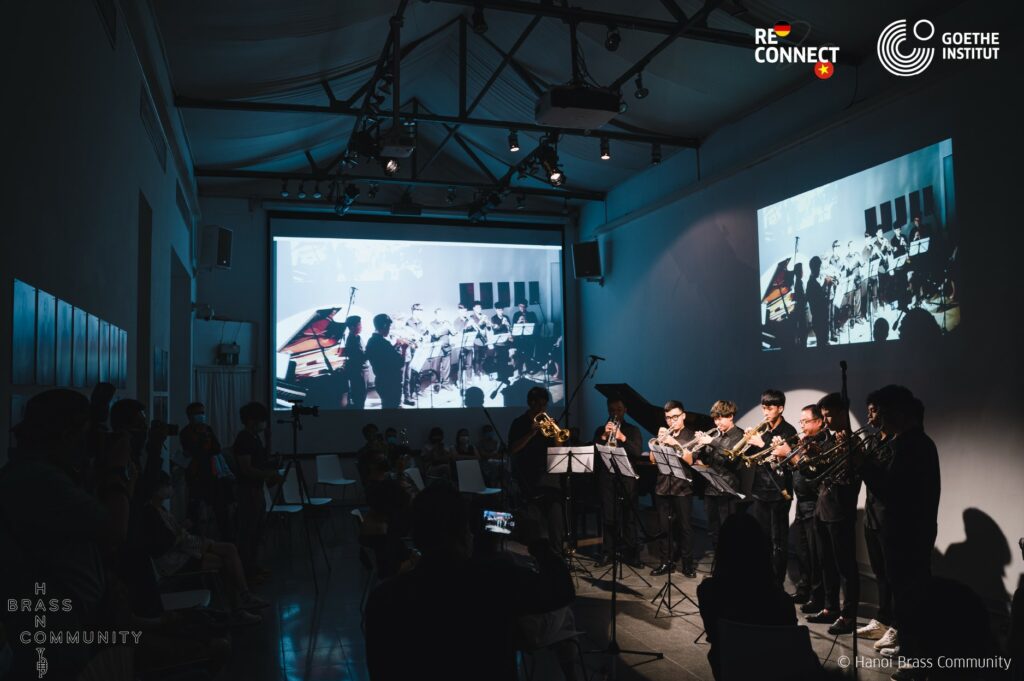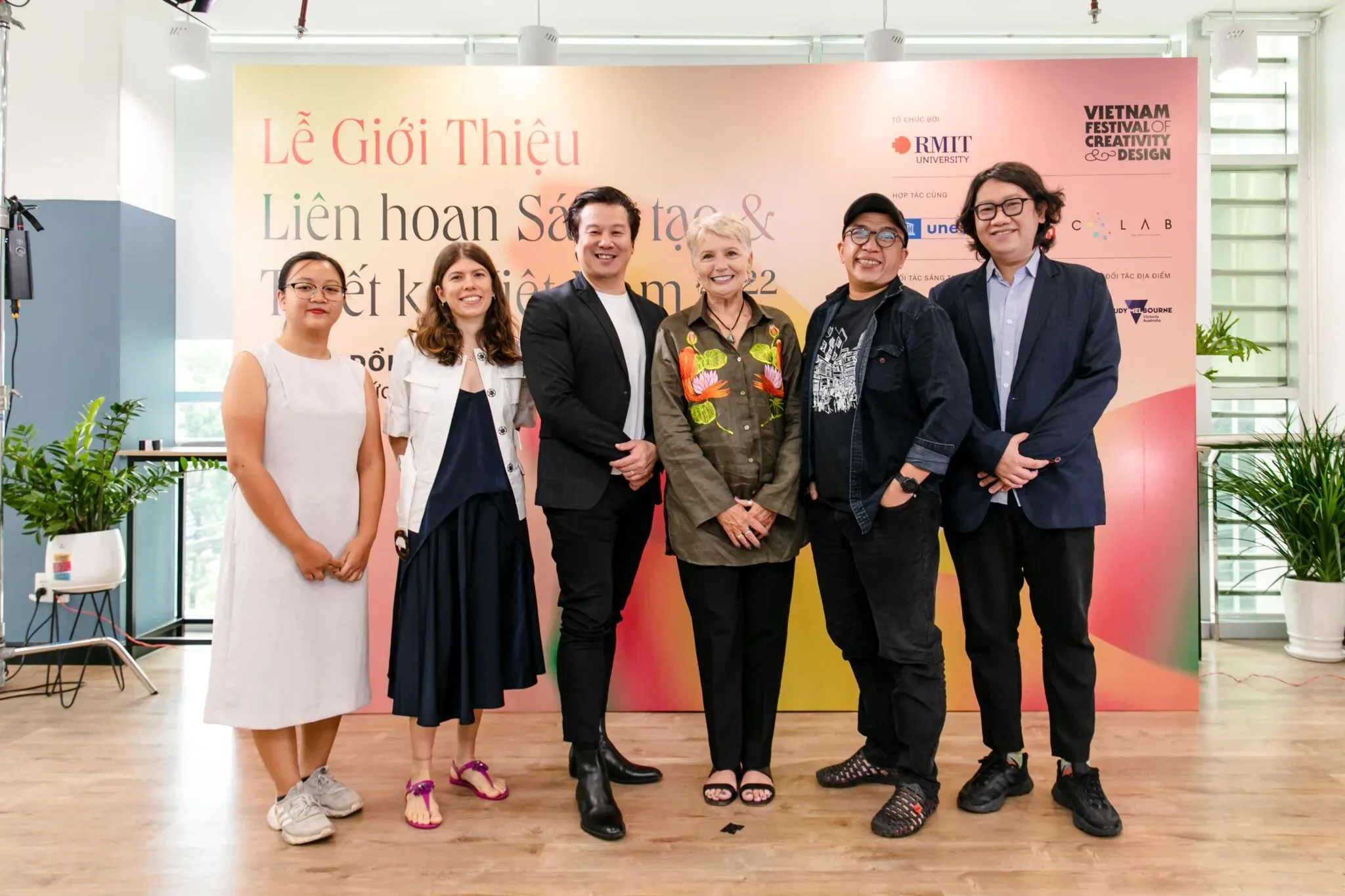The world has been finding itself in face of unpredictable “changes” in recent years. Multiple organisations and practitioners in the creative industries have made the decision to stay strong and actively overcome boundaries and challenges to find new opportunities and directions for growth.
“Change…”
In the past few years, the world has found itself in front of Covid-19 – unpredictable and unprecedented turbulence. Every industry and sector, no matter how sustainable, faces challenges, from health, education, and business to production… all are hindered by Covid-19. The creative industries – a relatively new sector compared to others – have been severely affected by the pandemic. The disease reduced the total value of the cultural and creative industries worldwide by 750 billion USD in 2020, equivalent to 1% cent of global GDP in 2019 [1]. Not considered essential services, museums, exhibitions and theatres were the last places to reopen – according to the World Economic Forum [2]. In the museum industry, 90% of locations had to close their doors, of which 10% may never reopen [3]. Cinemas, theatres and music events were also completely shut down due to bans on large gatherings: approximately 7,000 performing arts events in Italy were cancelled from February to March 2020, while 8,100 music performances in Brazil were called off in March 2020 [4].

The Metropolitan Museum of Art (New York) was closed in March 2020 due to Covid-19 (Photo: Cindy Ord/Getty Images)
At the individual level, 10 million people in the cultural and creative industries workforce, equivalent to almost 20% of the 51 million working in the sector, lost their jobs in 2020 [5]. Many “creative workers” have to seek employment in other sectors or exit the labour market entirely during the pandemic; which could lead to a diminishment in the skills and knowhow of the sector, and possibility that these industries would not be able to recover previous levels of economic performance.
…Creativity Challenge”
However, “the times make the hero”, and with the “workers”, the cultural and creative industries have persevered and even flourished stronger after the crisis, proving their ability to adapt flexibly and notably quicker than others. They actively took on challenges as a self-test of their own creative ability and discovered new paths of development for culture and creativity.
“Many artists and cultural professionals seized the opportunity of the rise in niche streaming services to develop innovative projects in the digital sphere”, said a UNESCO report.
The museum industry effectively utilised digital transformation during Covid-19. Google Arts & Culture collaborated with more than 1,200 museums and galleries around the world to bring virtual tours and experiences to every person [6]. From their bedroom in Vietnam, an audience can “travel” to famous museums such as The British Museum (London), Van Gogh Museum (Amsterdam), National Museum of Modern and Contemporary Art (Seoul)… Virtual reality and augmented reality technology were also enhanced to optimise the visitor’s experience.
The pandemic also witnessed many unique performances “live from the bedroom”. No need for an elaborate stage, artists recorded themselves in their homes or studios, mixed and mastered their work, created a video with a software, and the result is a DIY (do it yourself) music product uniquely from the Covid-19 era. The record label 88rising also caught up on this trend by live-streaming entire concerts of famous Asian-born stars, attracting an enormous amount of views from all over.

A virtual tour at Hood Museum, Dartmouth College, USA (Photo: Hood Museum, Dartmouth College)
Geographic distance is no longer a hindrance to culture and creativity, it is thanks to the pandemic-induced quarantine that people realised this. Establishing an online workspace becomes key to international collaborations and interdisciplinary connections between various cultural and creative industries.
Month of Arts Practice – MAP, a project initiated by artist Trần Trọng Vũ and organised annually by Heritage Space is a prime example of how the pandemic could not stop creative practice. The project started in 2015 with the aim of creating a space for art practice activities, exchange, education and exhibition between international and Vietnamese artists [7]. The project has been in operation regularly since 2015, through the two years of Covid-19 in 2020 and 2021 without interruption, because of their use of Zoom as a platform to connect artists and for a hybrid exhibition on MAP’s website.

Exhibition The White Distance within the framework of Month of Arts Practice MAP 2021 (Photo: Hoàng Minh Trang)
Another example is the project ReConnect by Goethe Institute which facilitated trans-local cooperation with meaningful online gatherings, which provide a sense of human connection during the ongoing pandemic. The financial support is meant for dialogue and co-production by artists in music (electronic, classical, and new music), video art, and performance [8]. Presentations, concerts and multimedia performances from various artists took place successfully despite the challenges of the pandemic.

A concert of Hanoi Brass Week within the framework of project ReConnect (Photo: Hanoi Brass Community, Goethe Institute)
That uncertain context also shows that interdisciplinary connections are extremely important for the cultural and creative industries, alongside others, to renew themselves and stand strong in face of crisis. Arts and culture need to be combined with technology, design and communication to spread their values to the community, while folk culture needs to be promoted and presented in modern and contemporary art practices for preservation and continuation, the arts need cross-disciplinary collaboration to create new values, or that creative individuals and collectives need to support and coordinate with each other to optimise resources for development.
That is the foundation and motivation for RMIT Vietnam to initiate Vietnam Festival of Creativity & Design (VFCD) – an open, effective interactive platform for creative individuals and organisations to connect and communicate with one another as well as the audience. During the Covid-19 pandemic in 2020 and 2021, VFCD was continued in person and online on multiple platforms, fulfilling its role in supporting the development of the cultural and creative industries.

Photo from the launch event of Vietnam Festival of Creativity & Design, August 2022 (Photo: VFCD)
The cultural and creative industries have witnessed a powerful transformation and been inspired to not lag behind others after the pandemic, but even opening up new and more potential directions after Covid-19. Inspired by that transformation, to celebrate the power of creativity in the creative industries in face of the challenges of the times, encouraging cross-disciplinary creativity, VFCD 2022 chooses the theme “Change: Creativity Challenge”. With the theme CHANGE: CREATIVITY CHALLENGE, VFCD 2022 program is expected to include talks/seminars, exhibitions, workshops, and many other activities discussing visions, trends, cultural identity and the future of Vietnam’s creative industries.
—
Vietnam Festival of Creativity & Design 2022 is organised by RMIT University Vietnam in collaboration with United Nations Educational, Scientific and Cultural Organisation (UNESCO), Vietnam National Institute of Culture and Arts Studies (VICAS) and COLAB Vietnam and other partners including individuals, groups, organisations, enterprises in the creative industries, with Hanoi Grapevine as the media partner.
References:
[1] [4] [5] UNESCO, Cultural and creative industries in the face of COVID-19: an economic impact outlook https://unesdoc.unesco.org/ark:/48223/pf0000377863
[2] World Economic Forum, COVID-19 hit the creative industries particularly hard. How can they be supported in future? https://www.weforum.org/agenda/2022/02/creatives-job-losses-covid-employment/
[3] Museums around the world in the face of COVID-19
https://unesdoc.unesco.org/ark:/48223/pf0000373530
[6] Andrea Romano, These 12 Famous Museums Offer Virtual Tours You Can Take on Your Couch https://www.travelandleisure.com/attractions/museums-galleries/museums-with-virtual-tours
[7] Heritage Space, THÁNG THỰC HÀNH NGHỆ THUẬT – MONTH OF ARTS PRACTICE – MAP http://heritagespace.com.vn/h1.nsf/0/Thang-thuc-hanh-Nghe-thuat–Month-of-Arts-Practice–MAP-47.htm
[8] Hanoi Grapevine, Finest Project Nominees: ReConnect https://hanoigrapevine.com/vi/2022/06/finest-project-nominees-reconnect/
